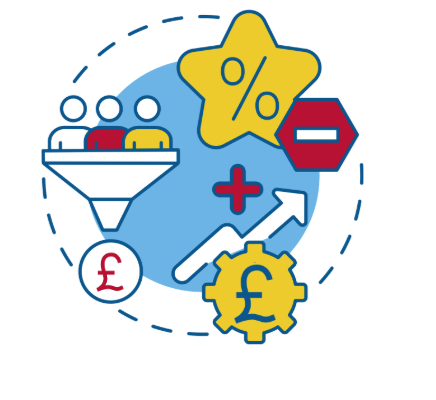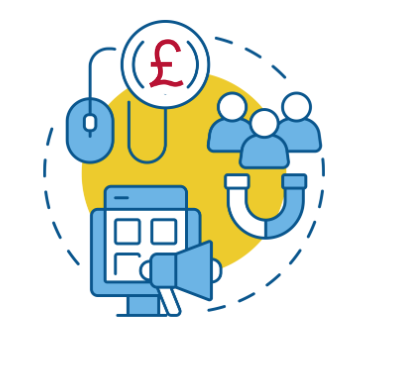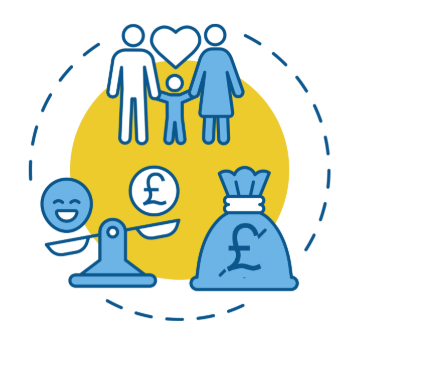
Why Your Business Will Break Without the Right Structure
Let’s be straight. If you’re running a business between £1M and £100M in Liverpool, you already know how messy things can get.
Everyone talks about growth like it’s the holy grail, but here’s the truth no one likes to admit: if your structure’s off, growth won’t save you, it’ll break you.
The Three Engines That Drive Every Business
Strip it all back, and every business runs on three engines: Sales, Operations, and Finance.
When they’re tuned and working together, things feel smooth. Deals close, projects get delivered, cash flows.
But when one misfires? The whole machine shakes. Suddenly deadlines slip, cash dries up, and you’re stuck firefighting instead of leading.
Key Principle #1: Sales Needs More Than “Busy”
Plenty of owners proudly say, “We’re busy.” But being busy is not the same as being profitable. If you’re not measuring properly, you’ve no idea whether you’re moving forward or just spinning your wheels.
The numbers you need to know inside out are:
- Conversion rates → how many leads turn into actual paying customers.
- Average order value → what each sale is really worth.
- Total revenue → the big picture of what’s coming in.
If you don’t know these numbers, you’re not selling, you’re guessing.
Key Principle #1 Case Study: Lucy & Yak
When Lucy & Yak started selling handmade dungarees, demand exploded overnight. But they hit chaos fast. Orders doubled, then tripled, and they had no structure in their sales reporting.
Once they built simple dashboards to track conversion rates and repeat purchases, everything changed. They could forecast better, manage stock properly, and make data-backed marketing decisions.
Sales isn’t just about closing deals, it’s about clarity. When you know your numbers, you know where to push and where to pause.

Key Principle #2: Operations Protect (or Destroy) Your Reputation
Sales may win the deal, but operations keep the client. And here’s the thing: if you can’t deliver on-time, on-budget, and on-scope, customers won’t stick around.
For your business, ops is about discipline. It’s knowing exactly what’s being delivered, by who, and when. Without that, you’ll spend more time apologising than growing.
Key Principle #2 Case Study: The Little Car Company
This British firm builds electric, scaled-down replicas of classic cars, incredible craftsmanship, but at first, chaos behind the scenes. Too many bespoke orders, no delivery rhythm.
They introduced structured project management with time-tracking, production milestones, and supplier dashboards. Within six months, output increased by 40%, with fewer errors and faster turnaround.
When your processes are systemised, your team stops firefighting and starts performing.

Key Principle #3: Finance is The Oxygen of Your Business
Sales bring cash in. Ops spend it. Finance tells you the truth.
It’s not enough to know your profit figure at year-end. You need live numbers:
- Cash position right now — how much is in the bank.
- Debtors — who owes you and how late they are.
- Creditors — who you owe and when it’s due.
- Cashflow forecast — where you’ll be in 30, 60, 90 days.
For you, this means finance can’t be an afterthought. It’s the oxygen that lets you keep running. Ignore it, and no amount of sales will save you.
Key Principle #3 Case Study: RIX Shipping
RIX is a family-run marine and fuel logistics company that grew fast through acquisitions. But in their early growth phase, their finance team was flying blind; multiple systems, no clear cash view.
They invested in integrated dashboards and weekly reporting on key financial indicators. Suddenly, decisions became faster, smarter, and based on facts — not gut feel.
Finance is your business’s nervous system. When it’s wired right, you can feel what’s happening before it becomes a problem.

Key Principle #4: Dashboards Put You Back in Control
Here’s the moment things click. When sales, ops, and finance numbers all report into one dashboard, you stop running on instinct and start running with clarity.
It’s like driving with headlights on instead of blindfolded. Suddenly, you know what’s working, what’s slipping, and exactly where to focus your attention.
The best part is, it doesn’t need to be fancy software at the start. A simple dashboard, even built in Excel, will give you control. What matters is having the full picture in one place.
Key Principle #4 Case Study: Bloom & Wild
The flower delivery brand scaled from a kitchen table to one of the UK’s fastest-growing e-commerce companies by doing one thing brilliantly, building a real-time performance dashboard.
They tracked fulfilment speed, customer satisfaction, and average order values daily. That structure allowed them to grow safely, even during massive seasonal peaks like Valentine’s and Mother’s Day.
Data doesn’t replace leadership — it sharpens it.

Key Principle #5: Structure Buys You Freedom
For you, the win is exactly the same. Structure isn’t boring — it’s freedom.
It’s the difference between being trapped in the day-to-day grind and having the headspace to think big. When your systems are tight, you don’t have to micromanage every sale, project, or payment. Instead, you can put your energy where it counts: building new products, pushing your marketing, inspiring your team, and driving innovation.
That’s the stuff that actually moves your business forward, and it only happens once the chaos is under control.
Key Principle #5 Case Study: Honest Burgers
The founders of Honest Burgers were stuck in their stores seven days a week. Growth felt more like stress than success. Once they built structure, team accountability, process systems, and live reporting, they stepped back.
That structure freed them up to focus on innovation, expansion, and building brand culture. The business didn’t just grow — it grew stronger.
The right structure doesn’t slow you down. It keeps you from crashing.

Implementation Strategy
Here’s how to build structure that supports — not strangles — your growth:
- Sales: Track conversion rate, average order value, and total revenue weekly.
- Operations: Measure on-time, on-budget, and on-scope delivery.
- Finance: Know your cash position, debtors, creditors, and cashflow forecast daily.
- Integrate it all: Build one dashboard to see the full picture.
- Act weekly: Review, adjust, and hold your team accountable.
Do that, and you’ll stop driving blind. You’ll start leading with clarity. Before you spend more on ads or hire more staff, ask yourself:
Do I have the structure, systems, and mastery in place to handle growth?
If the answer’s no, that’s the reason it feels harder than it should.
Get your structure right, and everything else starts clicking into place.
Take Action
Ready to build a business that grows without falling apart?
Book your free clarity call today and let’s make it happen.
Our Events
Don’t Just Read About It—Come Live It
You’ve seen the posts, read the testimonials, maybe even folllowed online but nothing beats being there in person.
At our monthly business growth MasterCLASSes and quarterly 90-Day Planning sessions, you’ll not only get a chance to meet like-minded business owners who are actually making things happen… you’ll also walk away with practical tools, simple systems and a customised action-plan backed by ActionCOACH‘s proven frame works.
Your first session? Totally free. No pitch, no pressure, just the kind of session that could spark a proper shift in your business.





